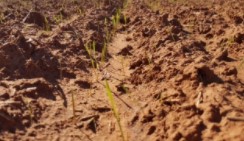
Weeds are the enemy of any healthy crop and they can be difficult, frustrating adversaries.
But, producers keeping a sharp eye on both the yield and the quality of their wheat crops are not heading into battle powerless.
In fact, a keen awareness of what is going on in the field is one of the most reliable weapons available to producers in the fight against worrisome weeds.
“Unfortunately, our weeds are usually better adapted to our fields than the crops we plant. It’s a continuous problem and something we have to watch,” said Misha Manuchehri, Oklahoma State University Cooperative Extension weed specialist for small grains and canola. “Every year is going to be a little different, so it’s better to put our boots in the field and scout rather than noticing issues when it’s too late.”
Vigilant producers are usually familiar with the weeds in their fields, but new species can pop up. In those cases, it is best to address any issues early.
“Take a close look at new weeds before they establish,” Manuchehri said. “Once a new weed establishes, especially if it’s a perennial, your chances of eradicating it are slim to none.”
Identifying the most troublesome weeds and developing an effective management strategy is crucial, particularly for producers trying to boost yields and increase grain quality.
Weeds and crops generally are competing for the same key resources in the field such as water, light and nutrients like nitrogen.
“To survive and reproduce, weeds are going to take advantage of the resources in the field. Yes, some species are more competitive than others and will access nutrients, like nitrogen, faster than nearby, less competitive plants,” she said. “But, ultimately, if a weed is utilizing available nitrogen, there is that much less for the crop.”
Also, failing to effectively manage weeds could lead to post-harvest concerns at the mill.
“When we can’t control a weed and it goes to seed, we’re going to haul those weed seeds to the mill and we may lose income if dockage or foreign material content is too high,” Manuchehri said. “Foreign material is especially important when it comes to grain quality because it cannot be cleaned from our wheat and will affect our end product.”
Fortunately, there are management options for dealing with problem weeds.
A great first step for a producer is to take care of the crop to give it a competitive edge over weeds in the field.
Crop rotation also is an important tool as the most troublesome weeds often mimic the life cycle of crops. So, grassy weeds are going to spell trouble for grassy crops, for instance. For this reason, producers may try to introduce other crops, like broadleaf crops, to trick the grassy weeds that can plague a wheat crop.